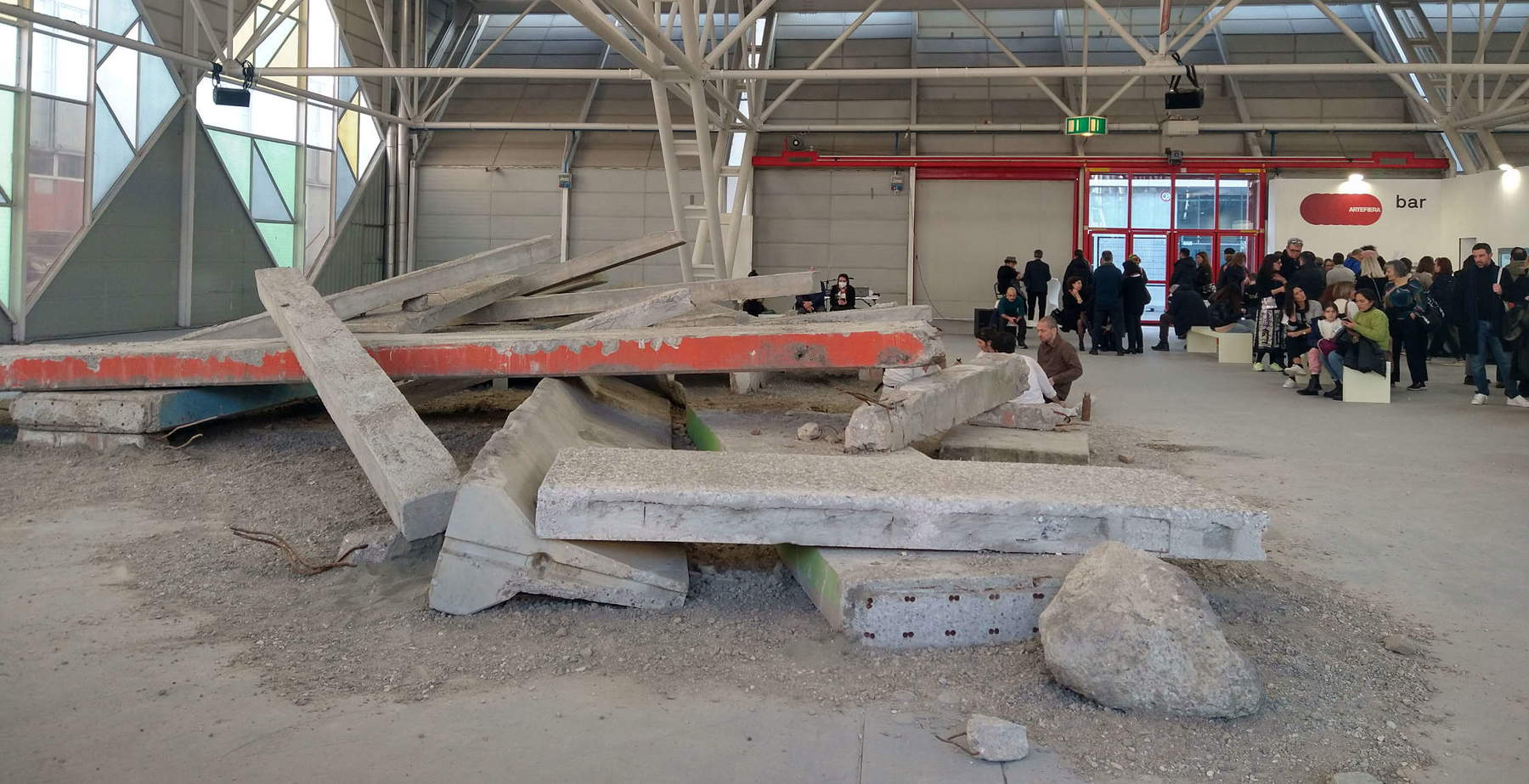Is the art market in crisis? And is that really a bad thing? Also, which art? That which is contemporary but is actually modern (i.e., from the late nineteenth century to the 1970s)? Or that which is truly “contemporary” and made in the last fifteen years, and preferably by artists who have emerged in the last fifteen years? The problem, actually, is earlier.
We are not only in a transitional and neo-Mannerist phase. For at least fifteen years, the total absence of critical confrontation and dialogue has killed the contemporary. The most contemporary thing we seem to be able to do today is to rediscover modern artists, such as Paul Icarus: but even the rediscovery of modern artists is a form of “Indiana Jones syndrome,” to which we resort instead of stimulating, prodding, and excavating the contemporary. As far as contemporary art in Italy is concerned, we have become accustomed to the worst: I realize that galleries and museums follow what is happening internationally, but if galleries and museums are doing badly, we should not necessarily follow them. Just to give two examples, exhibitions like those of Gian Maria Tosatti and Chiara Camoni at Hangar Bicocca in Milan are not exhibitions that can go unnoticed. We necessarily have to react and talk about them, both because of the content and the way these artists were selected. We are so outraged because Jannik Sinner was found in his body with an amount of doping corresponding to one billionth of a gram, but we are not outraged by the “PR doping” that invests art in Italy: we seem to be addicted to it, we take it for granted, but in the end the result for a “hit-and-run system,” after a few years, is a market crisis that then affects everyone.

Artists forcibly in the spotlight like Marinella Senatore, but who present in their work huge and obvious gaps between project and intentions, cannot leave us indifferent: certain things must be said and written for the good of all, and especially for the artists concerned who, being contemporary. can improve and grow. It is not possible to accept without saying anything a double solo show of Yuri Ancarani at Mambo in Bologna and, a few months and a few kilometers away, at PAC in Milan, for an artist who has consciously slid more and more toward cinema, and whose last production (the film Atlantide), before the two solo shows, was extremely objectionable, with predictable choices that wanted to badly ape the worst “Sorrentinism.”
But the debate about exhibitions, projects and artists is not for speaking ill of anyone: it is, if anything, for revitalizing critical debate and thus stimulating artists, and also for rekindling passion for collecting the contemporary. It is not true that everything has already been done: we are living in a historical phase with totally new themes with respect to the modern, compared to the last century, and completely new technologies and means. Simply, the market as we understand it does not need quality.
Why should a gallery struggle when collectors buy into whatever it puts in the booth? Is it better to struggle to present a truly contemporary artist and sell a work for ten thousand euros, or to sell a small mirror by Pistoletto for fifty thousand, or a large work by Icarus for sixty thousand, with no struggle at all? After a while, however cynical, this market does not work, because it is like selling seventy-year-old attitudes, it is like selling Ferraris without engines.
As Francesco Bonami said, the market is in crisis because there is no longer the passion of collectors, who are actually bored and disappointed with the contemporary, or they follow what friends of friends follow, without asking any questions. Because the situation is so bad that if you ask too many questions, it’s over. If you delve into Tosatti, Senatore or Camoni, but also other darlings of the market like Andreotta Calò, Arena or Cenci, there is too little left. And too many have bought, and so they have to keep quiet so as not to further devalue their contemporary purchase. Better to keep quiet and immerse themselves in the revival of modern and poor art.
Warning: the translation into English of the original Italian article was created using automatic tools. We undertake to review all articles, but we do not guarantee the total absence of inaccuracies in the translation due to the program. You can find the original by clicking on the ITA button. If you find any mistake,please contact us.